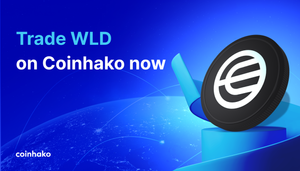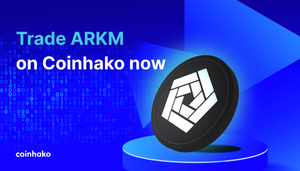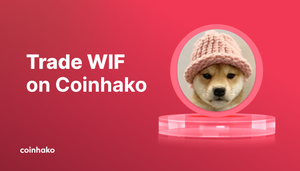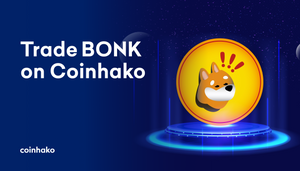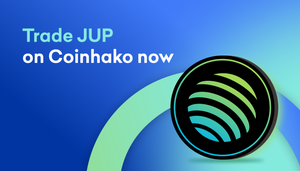Bitcoin halving is an important event in the world of cryptocurrency, specifically in the realm of Bitcoin. It refers to the reduction in mining rewards received by miners for their efforts in verifying and validating transactions on the blockchain network. This process occurs approximately every four years and is programmed into the Bitcoin protocol.
With events like this, there is bound to be plenty of confusion about its implications and speculations about what is to come — that’s why we’ve going to debunk some myths and misconceptions about the halving to help you understand and navigate the upcoming halving.
Myth 1: Bitcoin Halvings Will Make Bitcoin Price Skyrocket
While Bitcoin halvings have historically correlated with price increases, they are not the sole determinant of Bitcoin's price trajectory.
In previous cycles, it was commonplace to see an increase in Bitcoin’s prices before the event – which is largely fuelled by speculative behavior that prices will increase after the halving. This would then be followed by a fall in prices and another increase post halving, fuelling what many deemed as “bull-ish market cycles” for cryptocurrencies.
It is, however, important to note that past performance does not guarantee future results. While previous halvings have been associated with price increases, this correlation does not imply causation. The cryptocurrency market is highly volatile and influenced by various factors beyond just halvings.
Factors like market sentiment play a significant role in determining Bitcoin's price trajectory. Positive news or investor optimism can drive up prices, while negative news or fear can lead to declines. Macroeconomic conditions such as interest rates, inflation rates, and geopolitical events can impact investor sentiment towards cryptocurrencies as well. Other factors like regulatory developments and technological advancements also play a crucial role in shaping the cryptocurrency market.
View BTC Price in SGD
Myth 2: Bitcoin Halvings Will Lead to Instant Profits for Miners
Halvings do not guarantee instant profits for miners; instead, they necessitate adjustments and efficiency improvements within the mining ecosystem. Bitcoin halvings reduce block rewards, which can indeed challenge miners' profitability in the short term, especially for less efficient mining operations.
While miners' profitability also depends on various factors such as mining difficulty, transaction fees, operational costs, and the price of Bitcoin, it's important to note that Bitcoin halvings are not designed to guarantee instant profits for miners. Instead, they serve as an essential part of Bitcoin's monetary policy, ensuring a controlled supply of new bitcoins entering circulation over time.
To remain profitable after a halving event, miners need to adapt and optimize their operations, which may involve upgrading their hardware or improving energy efficiency to maximize their hashing power and reduce operational costs. Miners can also benefit from focusing on transaction fees as an additional revenue stream. As the demand for Bitcoin transactions grows, users are willing to pay higher fees to have their transactions included in blocks quickly.
Myth 3: Bitcoin Halvings Will Cause a Decrease in Network Security
It's important to note that while Bitcoin's security relies on computational power (hash rate), it also benefits from its decentralized nature and distributed consensus mechanism through proof-of-work. These factors work together to make it extremely difficult for malicious actors to manipulate or compromise the network.
Additionally, Bitcoin's design accounts for halvings by adjusting mining difficulty dynamically, ensuring that blocks continue to be mined at an average rate of one every 10 minutes regardless of changes in mining rewards or hash rate. If there is a significant decrease in hash rate after a halving event due to miners leaving the network, the difficulty will adjust downwards accordingly to maintain stability.
The halving events also attract attention and interest from both existing and potential miners. The anticipation of reduced block rewards can motivate more individuals and organizations to participate in mining activities, thereby increasing overall hash rate and strengthening network security. All these have led some to argue that halvings can actually strengthen network security over time.
Other Misconceptions about the Halving
The theory of a "bubble burst" following halving events in the Bitcoin market has been a subject of debate and speculation. While some believe that these events lead to a significant drop in Bitcoin's value, it is important to debunk such claims and clarify any misconceptions.
It is crucial to understand the importance of the halving — simply put, it is designed to control inflation and ensure scarcity over time. Contrary to popular belief, there is no concrete evidence supporting the notion that halving events directly cause a bubble burst or a drastic decline in Bitcoin's value. While market volatility can occur during these periods, it is often influenced by various factors like investor sentiment, economic conditions, regulatory developments, and overall market trends.
Claims about manipulation during halving events also need careful consideration as the decentralized nature of the Bitcoin network makes it highly resistant to centralized control or manipulation. Transactions are recorded on an immutable blockchain ledger accessible by anyone participating in the network. This transparency reduces the potential for manipulation significantly.
Misconceptions regarding transaction confirmation times during halvings should be addressed. Transaction confirmations depend on several factors such as network congestion and transaction fees rather than being directly influenced by halving events themselves. During times of increased activity or limited block space availability due to higher fees offered by users, confirmation times may be slightly longer but are not inherently tied to halving events alone.
The Importance of Accurate Information
When it comes to staying informed about Bitcoin halving events and making educated investment decisions, reliable sources of information are crucial. There are many sources online to find the right information or you can follow our updates here at blog.coinhako.com and any of our social media channels (Twitter, Linkedin, Telegram, Facebook).
It's important to note that while accessing reliable sources is essential, conducting your own research is equally crucial. Verify information from multiple sources before making any investment decisions related to Bitcoin halving events. By combining insights from trusted experts with your own analysis, you can enhance your understanding of this complex topic and make more educated choices regarding your investments.
Trade BTC on Coinhako
Risk Warning on Digital Payment Token Services
Hako Technology Pte Ltd ("Coinhako") is licensed to provide digital payment token services under the Payment Services Act 2019 (No. 2 of 2019).
The Monetary Authority of Singapore ("MAS") requires us to provide this risk warning to you as a customer of a digital payment token ("DPT") service provider.
Before you pay your DPT service provider any money or DPT, you should be aware of the following.
- Your DPT service provider is licensed by MAS to provide DPT services. Please note that this does not mean you will be able to recover all the money or DPTs you paid to your DPT service provider if your DPT service provider’s business fails.
- You should not transact in the DPT if you are not familiar with this DPT. This includes how the DPT is created, and how the DPT you intend to transact is transferred or held by your DPT service provider.
- You should be aware that the value of DPTs may fluctuate greatly. You should buy DPTs only if you are prepared to accept the risk of losing all of the money you put into such tokens.
- You should be aware that your DPT service provider, as part of its licence to provide DPT services, may offer services related to DPTs which are promoted as having a stable value, commonly known as “stablecoin”.
Visit: Coinhako.com/risk-disclosure for more information.

